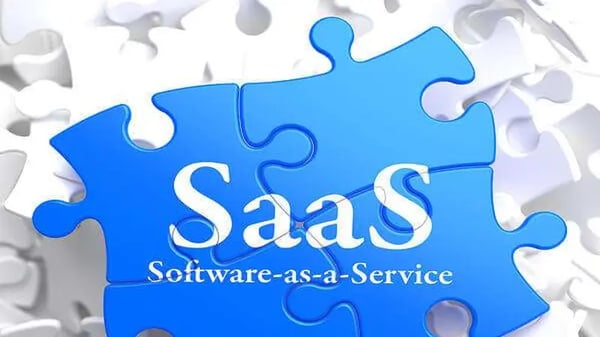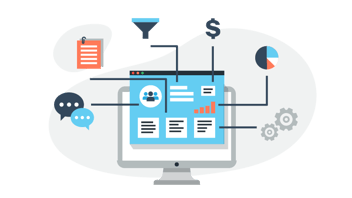SaaS Solution Pricing: Tips for Startups + New Product Launches
Defining the pricing model for a SaaS product needs to be part of your overall marketing strategy and a key element of winning in the SaaS landscape. It requires careful consideration to ensure it aligns with the needs of your customers, the value your solution provides, and your business objectives. We look at factors to consider, examples, and pros and cons for each.
Pricing (and getting paid for your solutions) is part of the customer experience you should optimize. Yes, you want to make money but is the customer getting fair value? You want your solution to help the customer "forever," but are they feeling penalized for using the product? Is it in line with your Market Segmentation? Does your pricing incent the right user behaviors? How does it support building your brand? How do you get your customers to want to pay more as they get over proportionally more value?
-
Value proposition: What unique value does your SaaS product offer? Your pricing model should reflect the value customers receive from your product.
-
Target audience: Who is your target audience, and what is their willingness to pay for your product? Conduct market research to understand your target audience's purchasing behavior.
-
Competition: What are your competitors charging for similar products? How does your product compare in features, functionality, and quality?
-
Cost structure: Consider your product's development and operating costs. Your pricing should allow you to cover these costs while generating a profit.
-
Revenue goals: Determine your revenue goals and use them to inform your pricing strategy.
-
Pricing models: Explore various pricing models, such as per-user pricing, usage-based pricing, value-based pricing, freemium pricing, and tiered pricing. Choose the pricing model that best aligns with your business goals and customer needs.
-
Discounts and promotions: Consider offering discounts and promotions to attract new customers and retain existing ones.
-
Billing frequency: Determine the frequency you will bill your customers monthly, annually, or at another interval.
-
Transparency: Make sure your pricing model is transparent and easy to understand for your customers.
-
Feedback: Collect customer feedback to understand their expectations and adjust your pricing model accordingly.
Dynamic Pricing
This model uses algorithms to adjust prices automatically based on demand and other factors. Uber is an example of a SaaS product that uses dynamic pricing.
-
Pro: ability to optimize revenue
-
Con: possibility of customers feeling exploited by surcharges during peak times.
Flat Rate Pricing
This model charges a fixed price regardless of usage. Dropbox is an example of a SaaS product that uses flat rate pricing for its Basic plan, which charges $9.99 per month for 2TB of storage.
-
Pro: simplicity and ease of use,
-
Con: possibility of users feeling like they are overpaying for underutilized resources.
Freemium
This model offers a free product with limited features and a paid version with more features. Slack is an example of a SaaS product that uses freemium pricing.
-
Pro: easy customer acquisition and the ability to provide a try-before-you-buy model
-
Con: the possibility of cannibalizing revenue and the need to provide enough value in the free version to entice customers to upgrade.
Geographic Pricing
This model charges customers different prices based on their geographic location. For example, Netflix charges different prices for their streaming service in different countries.
-
Pro: the ability to price according to the local market conditions
-
Con: possible resentment by customers for the pricing differences.
Pay-as-you-go / Usage-based pricing
This model charges customers based on the actual usage of the product. Amazon Web Services (AWS) is a popular SaaS product with this pricing model.
-
Pro: customers only pay for what they use
-
Con: the need to constantly monitor usage and the possibility of unpredictable billing.
Penetration pricing
Setting a low price to enter the market and gain customers. Example: Disney Plus, which set a low initial price to compete with other streaming services.
- Pro: attracts price-sensitive customers.
- Con: may not generate enough revenue.
Per Active User Pricing
This model charges customers based on the number of users actively using the product. This model is popular for online services with various active users, such as email marketing software. Expensify uses this model.
- Pro: charging customers for actual usage
- Con: possibility of being too complicated for customers to understand.
Per-feature pricing
Charges are based on which features are used. Example: Intercom, which charges based on which features the customer uses.
-
Pro: Fair pricing for customers who use the product less.
-
Con: Can be complicated to understand.
Per User Pricing
This model charges customers based on the number of people using the product. Canva is an online graphic design tool that offers per-user pricing among its pricing options, which allows all team members to access all the features of the Pro model for $30 per user per month.
-
Pro: easy calculation and forecasting of monthly revenue
-
Con: risk of being too costly for smaller teams.
Tiered Pricing
This model offers different pricing tiers with increasing levels of features. For example, Hubspot offers Marketing Hub Starter for $50/month, Marketing Hub Professional for $890/month, and Marketing Hub Enterprise for $3,200/month.
-
Pro: The ability to appeal to different segments of the market
-
Con: possible complexity for customers and the need to constantly maintain multiple tiers.
Value-Based Pricing
This model charges customers based on the value they receive from the product. This pricing model is particularly effective for products with high value potential, such as software that automates high-value business processes.
-
Pro: ability to capture a portion of the value created by the product
-
Con: difficulty in communicating the value proposition to customers.
There is no "right" answer, but there is a best answer for you and your customers. Optimize your pricing model for the benefit you can give to your customers and you will be able to optimize your customers' lifetime value.
This content is also available in:
- German: SaaS-Preisgestaltung: Tipps für Startups & neue Produkte
- Spanish: Precios SaaS: Consejos para startups y lanzamientos
- French: Tarification SaaS : Conseils pour startups & lancements de produits
- Italian: Prezzi SaaS: Consigli per startup e lancio di nuovi prodotti
- Romanian: Prețuri SaaS: Sfaturi pentru startup-uri & produse noi
- Chinese: SaaS 解决方案定价:初创企业和新产品发布技巧

Joachim is a certified HubSpot trainer with over 13 years of experience in content marketing, strategy, website development, and SEO. He has implemented numerous large-scale, international growth marketing programs, including one with UiPath, which grew from a startup to a successful IPO on the NYSE. Joachim has special expertise in multilingual marketing and sales enablement projects, and he uses the latest AI technologies to help our clients.









Leave a Comment